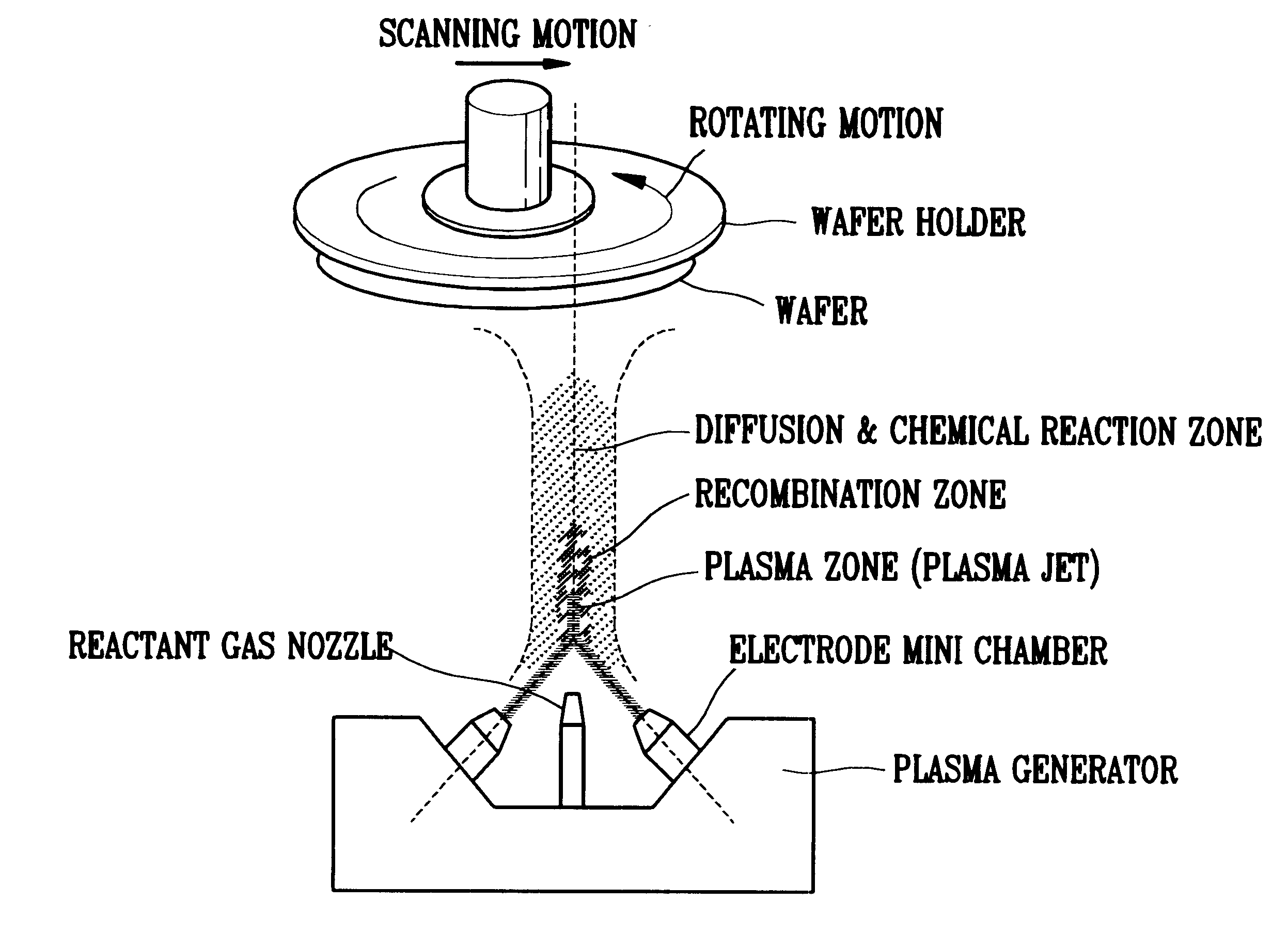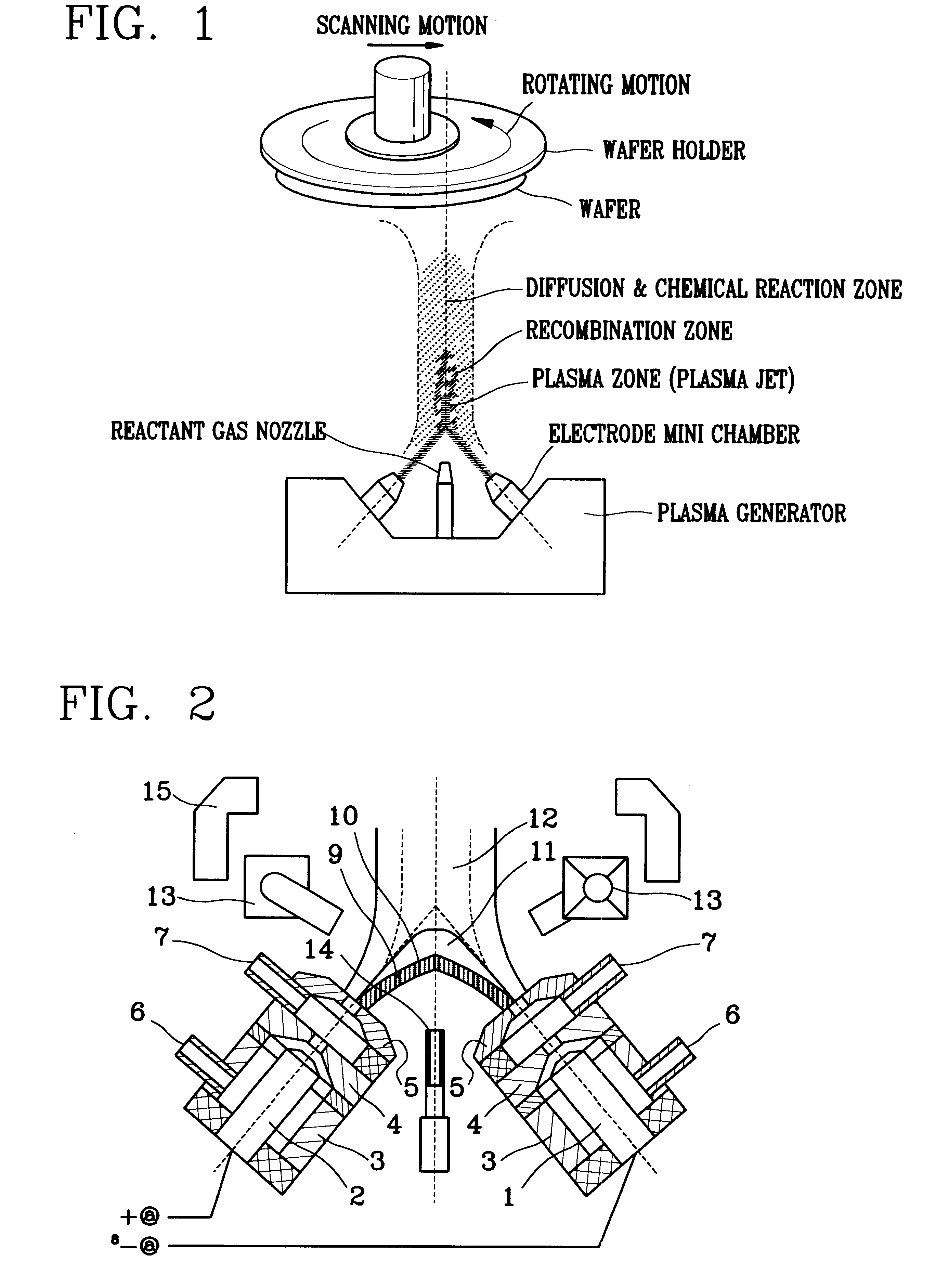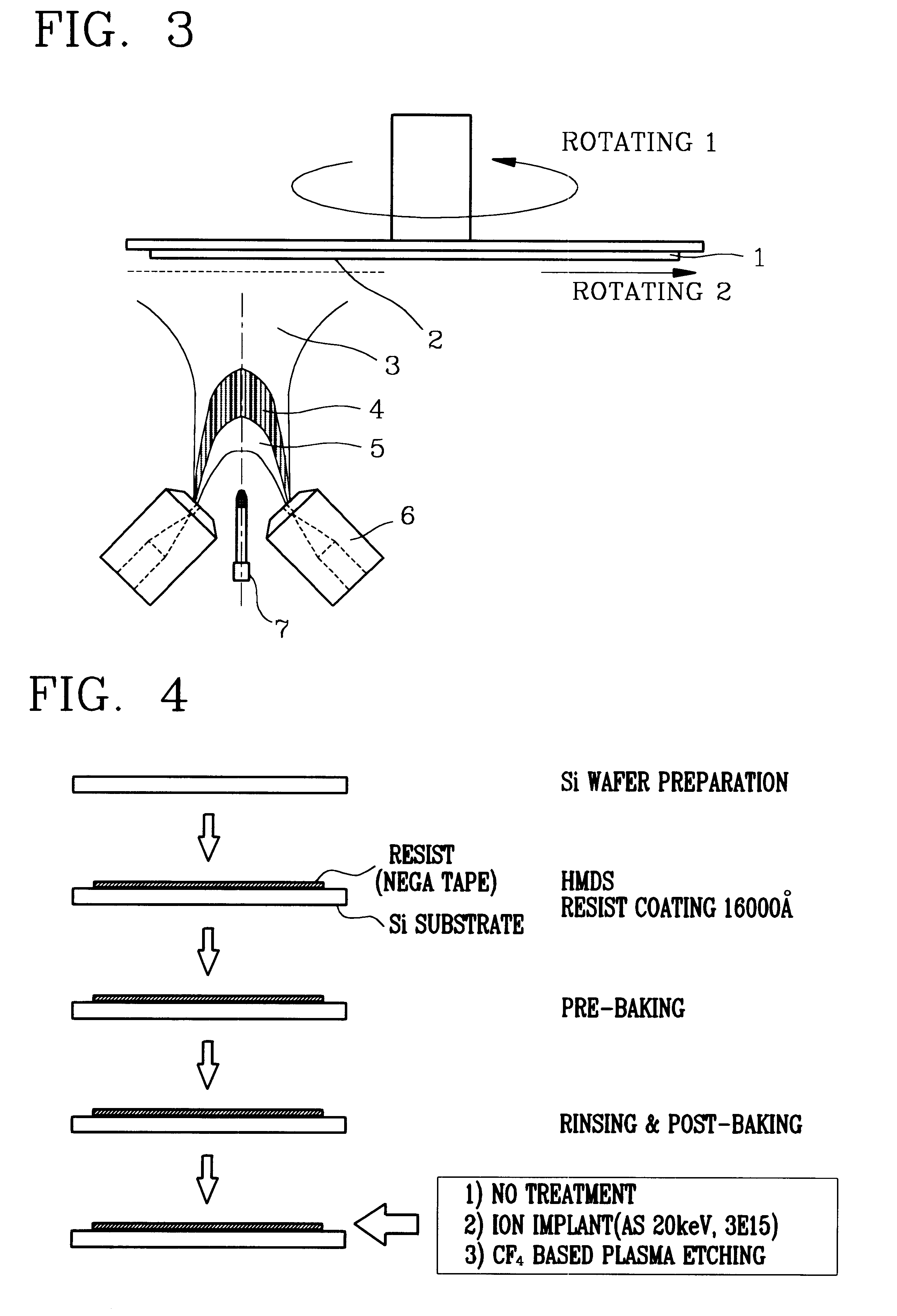Method for removing residual metal-containing polymer material and ion implanted photoresist in atmospheric downstream plasma jet system
a plasma jet system and metal-containing polymer technology, applied in the field of removing residual materials from the surface, can solve the problems of difficult to remove the remaining residual photoresist material, difficult to remove such a layer using conventional oxygen-based ashing processes, and substrate silicon recesses
- Summary
- Abstract
- Description
- Claims
- Application Information
AI Technical Summary
Problems solved by technology
Method used
Image
Examples
Embodiment Construction
Preferred embodiments of the invention will now be described more fully hereinafter with reference to the accompanying drawings. This invention may be embodied in many different forms and applications and should not be construed as being limited to the embodiments set forth herein. Rather, these embodiments are provided so that this disclosure will be thorough and complete and will fully convey the scope of the invention to those of ordinary skill in the art. It will be understood that when a layer is referred to as being "on" another layer or substrate, it can be directly on the other layer or substrate, or intervening layers may also be present.
A preferred embodiment of the present invention is directed to an improved method of removing via-etch induced polymer, particularly metal-containing post-etch polymer residue and ion implanted implantation damaged photoresist. The present invention may be practiced using any plasma generating system employing at least one plasma jet. The p...
PUM
| Property | Measurement | Unit |
|---|---|---|
| Angle | aaaaa | aaaaa |
| Distance | aaaaa | aaaaa |
| Distance | aaaaa | aaaaa |
Abstract
Description
Claims
Application Information
 Login to View More
Login to View More - R&D
- Intellectual Property
- Life Sciences
- Materials
- Tech Scout
- Unparalleled Data Quality
- Higher Quality Content
- 60% Fewer Hallucinations
Browse by: Latest US Patents, China's latest patents, Technical Efficacy Thesaurus, Application Domain, Technology Topic, Popular Technical Reports.
© 2025 PatSnap. All rights reserved.Legal|Privacy policy|Modern Slavery Act Transparency Statement|Sitemap|About US| Contact US: help@patsnap.com



